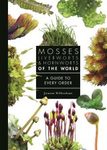![Lizard Ecology Lizard Ecology]()
Click to have a closer look
About this book
Contents
Customer reviews
Related titles
About this book
A reprint of a classical work in the Princeton Legacy Library. Originally published in 1994.
In a collection rich in implications for all fields of ecology, leading lizard ecologists demonstrate the utility of the phylogenetic approach in understanding the evolution of morphology, physiology, behavior, and life histories. Lizards, which are valued for their amenability to field experiments, have been the subject of reciprocal transplant experiments and of manipulations of resource availability, habitat structure, population density, and entire sections of food webs. Such experiments are rapidly rebuilding ecological theories as they apply to all organisms.
Lizard Ecology contains essays on reproductive ecology (Arthur E. Dunham, Lin Schwarzkopf, Peter H. Niewiarowski, Karen Overall, and Barry Sinervo), behavioral ecology (A. Stanley Rand, William E. Cooper, Jr., Emilia P. Martins, Craig Guyer, and C. Michael Bull), evolutionary ecology (Raymond B. Huey, Jean Clobert et al., Donald B. Miles, and Theodore Garland, Jr.), and population and community ecology (Ted Case, Robin M. Andrews and S. Joseph Wright, Craig D. James, and Jonathan B. Losos).
Contents
Contributors
Introduction and Acknowledgments
1 Measuring Trade-offs: A Review of Studies of Costs of Reproduction in Lizards 7
2 Understanding Geographic Life-History Variation in Lizards 31
3 Lizard Egg Environments 51
4 Experimental Tests of Reproductive Allocation Paradigms 73
5 Prey Chemical Discrimination, Foraging Mode, and Phylogeny 95
6 Phylogenetic Perspectives on the Evolution of Lizard Territoriality 117
7 Mate Limitation in Male Norops humilis 145
8 Population Dynamics and Pair Fidelity in Sleepy Lizards 159
9 Determinants of Dispersal Behavior: The Common Lizard as a Case Study 183
10 Covariation between Morphology and Locomotory Performance in Sceloporine Lizards 207
11 Phylogenetic Analyses of Lizard Endurance Capacity in Relation to Body Size and Body Temperature 237
12 Long-Term Population Fluctuations of a Tropical Lizard: A Test of Causality 267
13 Spatial and Temporal Variation in Structure of a Diverse Lizard Assemblage in Arid Australia 287
14 Historical Contingency and Lizard Community Ecology 319
References 335
Author Index 389
Species Index 397
Customer Reviews
By: Laurie J Vitt(Editor), Eric R Pianka(Editor)
403 pages, b/w illustrations, tables
"Organized into four theme areas containing a total of 14 topics, each [paper] is preceded by an insightful introduction written by a specialist in that area [and] [...] includes a section on future work and new questions that should be explored [...] a welcome addition for anyone wishing to examne research in this fascinating field."
– Choice
"The topics, [in this volume] represent an impressive diversity of approaches, ranging from detailed life-history studies of single species and in-depth analyses of lizard communities to broad-based comparisons of multiple traits across all groups of lizards [...] [Lizard Ecology] not only provides a context in which to view these individual studies but opens a unique window on lizard ecology past, present, and future."
– Science
"This volume represents many new research thrusts, hot areas of ecological investigation, and efforts at synthesis. The editors are leaders in their field and the contributors respected scientists."
– Roy McDiarmad, National Museum of Natural History, Washington, D.C.















































